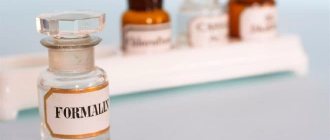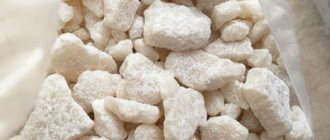Fluorine is a chemical element that is present in all tissues. It affects the metabolism of magnesium, calcium and phosphorus. In pregnant women, it promotes the absorption of iron, preventing anemia. Most of it is in bones and teeth.
If the concentration of fluoride compounds in tooth enamel is too low, it becomes thinner, more prone to rupture, and less resistant to the acidic environment of the mouth. Then an external dose of fluoride is needed, for example in the form of toothpaste, to keep the teeth in good condition.
The role of fluoride in the human body
Everyone knows about the existence of fluoride from school. After all, this is one of the elements of the periodic table. In many sources it is denoted by the letter F, as in the table. Pure fluorine is a gas that is poisonous and aggressive to the human body. But in all products, toothpaste, the element is contained in the form of salts - sodium fluoride and calcium fluoride. Then, on the contrary, it brings benefits to the body.
Important! The beneficial properties of an element are revealed when it is present in the body in strictly required quantities. Its excess, as well as its deficiency, only brings harm.
The benefits of the microelement fluoride for the human body are extremely great. It is necessary for normal mineralization of bone tissue. The substance gives bones strength, firmness and elasticity. Under the influence of fluorides, the growth of nails and hair is activated. Other beneficial properties of the microelement are less pronounced, but they do exist:
- increasing the body's resistance to pathogenic microorganisms,
- strengthening the immune system,
- stimulation of the formation of blood cells in the bone marrow,
- cleansing the body of heavy metals.
Daily requirement
The body of a 70 kg person contains approximately 2.6 g
fluorine The daily need for fluoride is determined by many factors: body weight, age, energy consumption:
adults –
1.5 mg
children -
1 mg
pregnant women -
1.5-2 mg
athletes and people exposed to intense physical activity –
2 mg
.
Children are especially sensitive to fluoride. Up to 17 years old, i.e. They especially need it during the formation and mineralization of bone tissue and teeth. Fluoride is assimilated in the children's body. 0.5 mg per day
fluorine is the minimum necessary for reactions caused by this element to take place.
Fluoride is best absorbed from drinking water
, and if there is not enough of it there, fluoride-containing medications are prescribed.
They must be taken with caution! A dose of more than 10 mg
per 1 kg of food will lead to permanent deformation of the skeletal bones, and above
5 mg
will lead to fluorosis - severe damage to tooth enamel in the form of brown spots.
Large doses of fluoride - more than 2 g
- cause poisoning. Fluorine content in water above 5 mg/l can provoke cancer.
The lethal dose is 5 g
fluorine
To satisfy the daily need for fluoride, you need to drink 5 glasses of black tea or 20 liters of milk, or eat 300 g of nuts, 3.5 kg of bread or 700 g of salmon.
Fluoride is best absorbed from drinking water - 70%
bioavailability. Therefore, water is fluoridated in many regions both in Russia and abroad. Fluoride is sometimes added to milk or salt. Such products have appropriate labels on the label.
Benefits of fluoride for teeth
The benefits of fluoride in toothpaste include protecting teeth from caries, strengthening enamel, and suppressing the proliferation of pathogenic microflora. The trace element also prevents the release of calcium from the teeth.
Protects teeth from caries
The enamel of the tooth surface is constantly exposed to acids contained in the oral cavity. With prolonged interaction, the crystal lattice of the enamel splits. A cavity forms that turns black over time. This is how caries develops.
The beneficial property of fluoride in toothpaste is that it penetrates the crystal lattice of the enamel and makes it more resistant to acidic environments. Moreover, it is effective not only for prevention, but also for the treatment of caries in the early stages. If the caries is superficial and does not penetrate deep into the tooth, you can try therapy with fluoride toothpaste. But, most likely, you will have to resort to additional treatment methods.
Prevents decalcification
The undoubted benefit of fluorides for bone tissue and teeth is the mobilization of calcium in them. The microelement promotes the transition of ions from the blood to the tissues of the body. This process is called remyelination. Saliva produced during food, on the contrary, promotes demyelination, or decalcification.
When entering the body, calcium and phosphorus ions are integrated into the crystal lattice of the enamel in greater quantities than usual. This prevents them from dissolving during saliva production. Thus, phosphorus protects teeth from decalcification.
Strengthens enamel
The main component of enamel is calcium hydroxyapatite. Fluorine contained in toothpaste comes into contact with the crystal lattice of this salt. A new compound is formed - fluorine hydroxyapatite. That is, the microelement replaces calcium. The new formation is more durable and resistant to oral acids.
Prevents the growth of pathogenic microflora
Another beneficial effect of fluoride on teeth is inhibition of the growth of pathogenic microorganisms contained in dental plaque. During their life, bacteria secrete special enzymes necessary for the breakdown of carbohydrates and their absorption. Fluoride can interfere with the production of these enzymes. Thus, the growth of pathogenic microflora is stopped.
Prevents the formation of lactic acid
The ability of a trace element to prevent the synthesis of lactic acid comes from its ability to inhibit the growth of bacteria. Microorganisms produce lactic acid during growth and reproduction. This substance has a detrimental effect on the structure of tooth enamel. By preventing the formation of lactic acid, fluoride protects the enamel.
Sodium fluoride in toothpaste - benefits and harms
Today is a hot topic: the harm of fluoride in toothpaste.
Almost every tube of toothpaste states that it contains fluoride. It is said to help keep your teeth healthy and protect you from tooth decay. History, as they say, is silent about the fact that if a child accidentally eats a tube of toothpaste and dies immediately, as well as why this actually happens...
How harmful is fluoride?
My daughter goes to kindergarten, where parents very often discuss at parent-teacher meetings about which toothpaste to brush their children’s teeth with or without fluoride, and they often touch on the topic of the harm of fluoride in toothpaste.
For me this topic was somehow not particularly important. I even laughed inadvertently, saying that people no longer have problems thinking about such unimportant things, until I came across certain information about the dangers of fluoride in toothpaste.
And the ball began to unwind more and more...
The new information gradually makes my hair stand on end, and once again I feel deceived again by this “health industry.”
Before we talk about the dangers of fluoride in toothpaste, let's first understand what fluoride is.
Because fluorine and fluorine are different.
So, what are fluoride and fluorite?
Fluoride is the fluorine ion. Fluorine is a gas, and in nature it is most often found in compounds with other substances, such as calcium fluoride (CaF) or sodium fluoride (NaF).
You and I consume fluoride from foods such as onions, lentils, almonds, nuts, and green leafy vegetables.
But - and here is ATTENTION! Fluoride, which is flavored with toothpaste, drinking water, some tablets and salt, has NOTHING IN COMMON with the essential microelement fluoride! On the contrary, this fluoride is a very poisonous chemical by-product of the aluminum, steel and phosphate industry! Please remember this! Because there is more than enough deception about fluoride!
And why? And in general, where did this so-called fluoridation of teeth come from?
The “fluoridated wave” came to us from America somewhere in the 50s. As mentioned, fluoride is a by-product of the aluminum, steel, and phosphate industries. As a dangerous poison (and fluoride is even more dangerous than lead and arsenic!), it had to be somehow safely eliminated, for which a lot of money was spent.
But “scientists” from the beauty and health industry came to the aid of this industry. And so, poisonous garbage not only began to be disposed of elegantly, but also crazy money began to be made from it. “Fluoridation is the biggest deception of this millennium.” Robert Carton, Ph.D. 1992
For those who are interested in this topic, it is written here very interestingly about fluoride and how harmful it can be.
- fluoride was used in both world wars as a gaseous agent
- Sodium fluoride is found in high concentrations in rat poison and some pesticides
- It is found in small quantities in toothpaste, mouthwash and tap water (not available in all countries)
- fluoride can accumulate in the human body, thereby causing gradual but sure poisoning
- accumulating in the body, fluoride kills vital enzymes that are responsible for the functioning of the immune, digestive, respiratory and circulatory systems
- fluoride slowly but surely disables a person's free will, which is why it is found in 60% of psychosamotic medications
“Fluoride causes cancer faster and more powerfully than any other chemical.” Dr. Dan Bark, one of the founders of the American Institute for Cancer Research.
What about the teeth?
I don’t think you’ve ever heard about the dangers of fluoride in toothpaste from your dentist? And this is not surprising. Doctors are the same people, they often cooperate with various big brands and offer what is profitable for them. They simply have no reason to talk about the dangers of fluoride in toothpaste. So what should we do? - you ask yourself.
Girls, the answer, like everything ingenious, is simple: A healthy diet, and not FLUORIDE, will keep your teeth healthy! If you want to have healthy, beautiful teeth, watch your diet! Less factory sugar and processed foods, more green vegetables - this is the surest path to dental health. When choosing a toothpaste, try to choose one that not only does not contain fluoride, for example, like mine from Lavera (but more on that below), but also does not contain aggressive tensides, like sodium lauryl sulfate.
- do not keep the paste in your mouth for longer than the prescribed two to three minutes, do not swallow
- Watch how your children brush their teeth, so that there is no more than a “pea-sized amount” of paste on the brush, so that children do not eat the paste just like that (as often happened with my little one :)
- take medications with fluoride only after consulting a doctor and carefully weighing the pros and cons
After I learned all this, I naturally began to think about what I brush my teeth with and what my child uses to brush his teeth. I used to brush my teeth with Paradontax paste, but after I found out that they test on animals, I quickly said goodbye to it. I bought myself a toothpaste without fluoride from Lavera.
Not only is it not tested on animals, but it also has a certificate of organic cosmetics (and in general, I really like the company, I’ll do a review someday, I have a lot of good things from it). And thank God, there is a lot of toothpaste without fluoride on store shelves, or at worst on the Internet. Here are some products:
- Lavera - there are two of them, the one that is regular, non-whitening, without fluoride
- Weleda - all without fluoride
- Logona - all without fluoride
All these companies have a Bio-cosmetics certificate
Not only calcium can improve the structure of bone tissue and strengthen teeth. Few people know that fluorine also plays a significant role in this. Fluorine itself is just a gas that can cause poisoning.
But its combination with sodium, on the contrary, is widely used in medicine and industry to produce useful and essential products. But is sodium fluoride really that safe? Is fluoride in toothpaste harmful? How much of this substance can be ingested normally per day without harming health?
Sodium fluoride, what is it? A small amount of it is found in nature, but for human needs this substance is obtained through complex chemical reactions.
Fluorine easily forms compounds with many chemical elements, but sodium fluoride (NaF) is better absorbed.
Its presence in the body promotes the formation of fluoroapatites - the most stable compounds with calcium, which are the basis of bone tissue. Therefore, sodium fluoride is contained in toothpaste - it protects teeth from the development of caries.
Sodium fluoride powder
A small amount of fluoride is normally present in water, but its concentration varies in different regions, so it is often necessary to take additional fluoride.
The role of sodium fluoride in human life:
- stimulates the formation of bone cells - osteoblasts, strengthens the skeleton;
- participates in the formation of tooth enamel;
- as part of toothpaste, it has a bactericidal effect on bacteria, improves blood circulation in the gums;
- in optimal concentrations, sodium fluoride for children prevents the development of caries and periodontal disease (damage to tooth tissue);
- it is used as a detergent;
- Sodium fluoride is used in the chemical industry (in metallurgy for cleaning and remelting metals, welding) and for the production of freon.
NaF is an active participant in many chemical reactions in the human body and in the production of chemical compounds. But despite its considerable benefits, it is precisely this that causes the development of serious illnesses.
The optimal fluoride content in drinking water is 0.7–1 mg/l. Its deficiency leads to the development of diseases.
Excess fluoride in toothpaste and products is not only beneficial, but also harmful.
Its excess contributes to the development of fluorosis - this is a lesion of tooth enamel with the appearance of spots on it from red to dark brown, due to which defects in dental tissue gradually appear.
A high content of this substance in the environment can lead to intoxication of the body.
Why is fluoride harmful? Its deficiency, as well as its excess, leads to impaired development of bone tissue and deterioration of the condition of teeth.
fluoride in toothpaste should not exceed 0.05%. This is the recommended concentration of the substance for children living in areas with low levels of this trace element in food and water.
In this amount, sodium fluoride prevents the development of caries. The problem is that often people do not know about the chemical composition of tap water and whether there is a lack of fluoride in their body.
Therefore, the use of such toothpaste is not always justified and often leads to the opposite effect:
- the development of fluorosis due to an excess of microelements in the body;
- the appearance of allergic reactions;
- disruption of the heart;
- increased blood pressure.
The lack of this substance in dental tissue can be compensated by another method - fluoridation. This is a procedure for saturating enamel with fluoride ions.
Is fluoridation of teeth harmful? No, the procedure is safe and does not cause harm to the person. Several sessions promote the accumulation of the substance in the enamel and protect against the pathological influence of bacteria for a long time.
But if there is an excess of fluoride in the body, the procedure will worsen the condition of the teeth.
Normally, the amount of fluoride that should enter the human body with food is from 0.5 to 5 mg per day. A sharp increase to 5–10 g is already a toxic dose for an adult weighing at least 70 kg. In lower concentrations, the substance poisons all systems. Its amount in tissues may increase if:
- if there is a lot of fluorine in the environment (human work is related to the chemical industry);
- when there is a large supply of it with food;
- excess fluoride in teeth occurs with sufficient fluoride content in water and the use of fluoridated toothpaste (the optimal NaF content recommended for children under 12 years of age is 0.05%);
- when prescribing sodium fluoride for the treatment of bone diseases.
Fluoride in children's toothpastes
When choosing a cleaning product for a child, it is necessary to correctly assess the possible harm and benefits of fluorides in toothpaste. Young children swallow up to 60% of toothpaste when brushing their teeth. And an excess of microelement causes great harm to the body. The World Health Organization has established that for children it is recommended to use hygiene products with a fluoride content of no more than 1500 ppm.
A useful property of toothpastes with fluoride is the effective prevention of caries in children. But they should be used in short courses only if there are appropriate indications.
Important! Before you start brushing your child’s teeth with fluoride, you should consult with your pediatrician about the advisability and timing of treatment.
Excess fluoride and overdose symptoms
The risk of overdose of fluoride compounds may more often concern drinking water and general industrial pollution. The most common complication of fluoride overdose is fluorosis. Characterized by the appearance of chalky stripes on the surface of the crowns. Subsequently, a strong change in the color of the enamel and its destruction occurs. The complication is rare and is more common in children and adolescents, whose weakly mineralized enamel is more prone to the accumulation of large doses of fluoride.
To avoid disease, it is enough to brush the teeth of a child under 6 years old with a toothpaste intended for his age, with less fluoride. Monitor hygiene procedures, for example, ensure that the child does not swallow the toothpaste.
The benefits of fluoride are much greater than the possible risk of complications, which are extremely rare or non-existent. When excess fluoride is deposited in bones and tendons, it can cause long-term changes in bone structure and negatively impact joints. However, this type of disease can be the result of an overdose of fluoride, which will not occur with daily brushing of teeth.
Harmful effects of fluoride toothpaste
The danger of fluoride in toothpaste manifests itself when there is an excess of the microelement. This condition is called fluorosis. When a substance enters the body in excess, it is slowly eliminated. Most fluorides are deposited in bone tissue and teeth. Recently, scientists discovered that they also accumulate in the structures of the central nervous system. The pineal gland suffers the most.
The first manifestations of fluorosis appear on the teeth, namely their buccal surface. Most often, the incisors of the upper jaw are affected, less often - the lower ones. With a further increase in the concentration of fluoride in the body, the remaining teeth are affected. Tooth enamel wears off, cracks and erosions appear on it.
Fluoride deficiency
The cause of the deficiency may be insufficient fluoride content in drinking water, because it is the main source of this element.
Deficiency symptoms:
Fragility and fragility of hair, split ends, appearance of “white” spots along the length of the hair, hair loss;
Thinning of enamel, carious lesions, tooth hypersensitivity, crown fractures. Since a lack of fluoride increases the enamel’s susceptibility to destruction, erosion, abrasion, and even necrosis are characteristic;
Osteoporosis. Especially typical for people over 50 years of age. Fractures of the femoral neck, repeated fractures, and slow healing are common.
The best way to eliminate the deficiency is to change the source of drinking water or take fluoride-containing medications (strictly as prescribed by a doctor). If changes appear on the enamel, use fluoride-containing toothpastes and undergo remineralization therapy at the dentist (a special composition is applied that replenishes the lack of calcium and fluoride in the tooth enamel).
Replenishment of fluoride deficiency can be general and local - depending on the manifestations, concomitant diseases and taking into account possible contraindications. Now there are a lot of drugs containing fluoride, but when taking them you need to be careful and consider the fluorides contained in the foods and vitamins that you take. Do not forget about the compatibility of drugs - carefully read the instructions for all medications!
What foods contain fluoride?
Fluoride has the greatest benefit for people who are deficient in this microelement. This population group is advised to eat fluoride-rich foods and drink bottled water. Below is a table of the most saturated elements of products and the concentration of fluorine in them.
| Product | Fluoride content per 1 mg |
| Cod | 0,1 |
| Sea bass | 0,2 |
| Herring | 0,525 |
| Salmon | 0,21 |
| Acne | 0,23 |
| Chicken breast | 0,21 |
| Chicken liver | 0,19 |
| Buckwheat | 0,1 |
Sufficient microelement content in green tea and parsley. Seafoods other than fish are also rich in it:
- shrimps,
- mussels,
- seaweed.
Endemic areas of the country are identified separately. In such areas, the natural fluorine content is insufficient. Therefore, people suffer from chronic deficiency of the element. In this case, food and water are specially enriched with fluoride, that is, fluoridated.
Fluorine
Fluoride - prevents the development of caries, penetrating microcracks in tooth enamel and smoothing out irregularities, participates in the process of hematopoiesis, helping to prevent osteoporosis, supports the immune system, and accelerates bone tissue regeneration in case of fractures
When they talk about teeth or the construction of bones, they primarily mean calcium. But we already know that calcium also forms bone tissue in the presence of phosphorus and vitamin D. Only this triumvirate (calcium, phosphorus, vitamin D) ensures calcium-phosphorus metabolism.
After it was discovered that bone tissue contains fluoride, they began to enrich water with fluoride, but a few years later it became known that excess fluoride in drinking water causes dental disease. We began to purify the water from fluoride! And again it’s bad! Dental caries has appeared!
It turned out that the amount of this element (0.5 mg per 1 liter) is too small for the health of the body; 1 and 1.5 mg per 1 liter are acceptable and sufficient amounts, but more is too much. You see! The difference between beneficial and harmful doses is so insignificant that many speak out against water fluoridation. But at the same time, some experts claim that it is thanks to fluoride that children and adults get rid of caries. Obviously, fluorine can be a useful element if there is little of it, and harmful if there is a lot of it.
Today, when new industrial enterprises are springing up everywhere, all living things are simply poisoned with fluorine.
When fluoride salts accumulate in large quantities in the air, soil, and water, they enter the human body and concentrate in his bones. Excess fluoride causes osteochondrosis, changes in the color and shape of teeth, the direction of their growth, coarsening of joints, their immobility, and bone growths.
The body excretes it in urine, but it cannot cope with its excess. Large doses of fluoride are extracted from the body by magnesium, which is found in the blood lymph. But magnesium should always be 2 times less than calcium, and large doses of it reduce the calcium content in the bones, which ultimately leads to their destruction. And calcium breakdown products accumulate in the kidneys, lungs, and muscles.
How to neutralize the harmful effects of fluoride?
“You can reduce the toxicity of fluoride by adding aluminum or calcium salts to the soil,” writes Yu. Aleksandrovich. Nothing is known about aluminum yet, but an increase in calcium can be beneficial for our body. However, the danger of fluoride increases with the growth of industry and the use of inorganic fertilizers in agriculture.
Most food products contain on average 0.2-0.3 mg of fluoride per 1 kg of product: in fish - 5-15 mg/kg, in milk - 0.1-0.2 mg/l.
Not so long ago, many people were interested in krill. The cheap product is a source of protein that can be used to make excellent flour, etc. But it turned out that krill contains an incredibly high and dangerous amount of fluorine: 1 kg of raw mass contains 2 g of this element, and boiled mass contains an average of 750 mg (for reference, we add that in 1 liter of any wine the maximum permissible fluorine content is 5 mg).
Fluoride tablets are sometimes given to school-age children to prevent dental caries. This is very dangerous, especially if there is excess fluoride in the soil or if you live in areas adjacent to superphosphate factories or aluminum smelters.
Tea lovers should know: the amount of fluoride in the finished drink depends on its strength, duration of infusion and duration of boiling. You need to boil water once and quickly, otherwise the salts turn into hard-to-digest compounds. The tea should be steeped for no more than 5-6 minutes. and remember that in 1 glass of long black tea you will get 0.2 mg of fluoride.
In such varieties of tea as Ceylon, Assam, Darjeeling, etc., 100 g of dry leaf contains from 10.26 to 15.25 mg of fluoride. In Chinese tea it can be from 3 to 400 mg, since the Chinese use fluoride-containing pesticides to spray the tea bush.
If you want to be healthy, it is wiser not to drink too strong tea. In addition, xanthine1 was found in tea, which is a poison for hemoglobin. It is better to drink infusions from the leaves and petals of dried plants - black currant, sage, thyme, raspberries, rose hips, chicory.
Excess fluoride is dangerous!
How do you know if there is too much of it in the body?
Initially, small spots appear on the enamel of the teeth - lighter or darker - but the more fluoride in the body, the darker the spots and, finally, they become brown or black. The teeth begin to look holey, crumble, and are even difficult to fill.
According to Japanese scientists (1969), there is a connection between an increase in fluoride in food products and cancer of the digestive system.
There is more fluorine in the soil and air in areas where industry is developed. But even natural fluoride compounds are very toxic in excess. They often cause diseases of the skin and mucous membranes, have a toxic effect on plasma cells and lungs, causing symptoms similar to severe asthma. When accidents occur at enterprises, large amounts of fluorine and sulfur are released from pipes. In case of acute poisoning with these salts, paleness, blueness of the skin appear, the heart beats less and less, hoarseness and vomiting occur.
The compounds of this element are soluble, so plants receive them from water, from the air, through leaves (fluorine accumulates in fruits). The fluorine concentration in leaves can increase 240-260 times. In Florida, where superphosphate production is developed and 17 factories emit 17 tons of fluorine compounds into the atmosphere every day since 1966. On citrus plantations, 60 miles away from the factories, the harvest sharply decreased, oranges grew there only the size of plums, and it was also noticed that cats began to die.
The fact is that plants convert the fluorine compounds they absorb into toxic substances that are very harmful to people and animals. Organic fluoride compounds extracted from soybeans were 500 times more toxic than inorganic compounds found in water and air. So it is dangerous to water plants with water containing fluoride.
Canadian scientists determined the fluoride content in canned foods (pork and beans, tomato soup, mixed vegetables, two types of beans, peas, etc.) and seasonings and came to the conclusion that the content of fluoride compounds is rapidly increasing in widely distributed food products. They demanded that the food industry indicate on labels the amount of fluoride in products.
Dentists find “spotted” teeth in children because the industry “provides” excess fluoride in the air and water.
What to do to avoid fluoride poisoning?
Much depends on industry: fluorine is released into the air by factories and plants that produce not only superphosphates, but also iron, steel, copper, zinc, aluminum and other metals, as well as ceramics, bricks, enamels, and glass. All these substances are also released by oil industry enterprises.
Relevant institutions are obliged to take measures to protect the environment from fluoride and in any case to combat attempts to fluoridate water, salt and other food products, especially in places poisoned by fluoride. And fluoride should be prescribed as a therapeutic agent only individually, very carefully, taking it under the constant supervision of a doctor and with regular testing.
You can reduce the fluoride content in food at home by soaking it for a few seconds before eating and rinsing it under running water. Fluoride compounds dissolve easily in water, so fluoride can be “washed out.” This is especially necessary for residents of industrial areas, whose homes are located close to highways, city highways, factories, factories, etc. Water must be purified from fluoride, and special filters are indispensable.
Main sources:
Leafy vegetables, spinach, apples, grapefruits, grains, rice, potatoes, nuts, onions; as well as drinks such as tea and wine, sea fish and other seafood, chicken, eggs, milk, meat and offal.
AYURVEDA NUTRITION
Fluorine
Chyawanprash is a multicomponent biologically active mixture rich in vitamins and minerals, consisting of 51 components, completely natural and fresh products (berries, fruits, roots, natural calcium, gold, silver). Healing and prolongation of youth. The secret of true health from the healers of ancient India. Chyawanprash does not contain artificial additives or flavors and is absolutely safe.
"Fluorine" means "destruction" (
from Greek
) and this name was not given to it by chance. Many scientists died or became disabled trying to obtain pure fluorine, which is why this element was nicknamed “the bringer of doom.”
Only at the end of the 19th century were French chemists able to isolate fluorine. At the same time, it was proven that it is the main constituent element in mineral metabolism, performing many important functions in the human body. The condition of the bones, their hardness and strength, the correct formation of the skeleton, the condition of the hair and its growth, and, of course, the health of the teeth depend on this substance.
Fluoride, with the participation of phosphorus and calcium, is able to prevent the development of caries by penetrating microcracks in tooth enamel and smoothing out irregularities. It is also involved in the process of hematopoiesis, helps prevent osteoporosis, supports the immune system, and accelerates bone tissue regeneration in case of fractures. Fluorine ensures better absorption of some other elements, and also allows you to get rid of radionuclides.
How to remove fluoride from the body
There are several simple remedies that will help remove excess fluoride from the body. But these methods are effective only for mild fluorosis. Therefore, intoxication must be diagnosed as early as possible.
Before using any method, you should completely stop the body’s contact with the microelement: give up fluoridated foods and water, stop brushing your teeth with fluoride paste. The main methods that can remove a substance from the body include:
- Iodine – increases the excretion of the element in the urine. The concentration of iodine is high in the following foods: lingonberries, strawberries, potatoes, beans.
- Boron - acts similarly to iodine. It is found in dates, honey, nuts, broccoli, avocado, and prunes.
- Selenium is able to block the activity of fluoride in the body. It is obtained by eating Brazil nuts.
- Dry saunas. Although this method may seem strange, intense sweating helps eliminate toxic substances from the body. The main thing before taking a sauna is to make sure your body is sufficiently hydrated to avoid dehydration.
What could be the consequences of microelement deficiency?
At the same time, fluorine is an important substance for our body. It affects the metabolic processes in it, promotes the removal of dangerous and heavy metals. Without it, immunity will not be supported; iron is poorly absorbed.
More on the topic Facial asymmetry appears in adolescence. How to correct facial asymmetry without surgery: prevention, basic treatment methods
A lack of fluoride is reflected in the bones - they become bent, become brittle and brittle, and when fractured, they do not heal well.
Teeth also largely depend on the lack of an element: the enamel becomes thinner and becomes unusable, allowing the development of caries.
An excess of fluoride does not bring anything good either. It is not he himself, but a supernumerary amount of him. True, it can be controlled so that there is no harm. After all, too much fluoride leads to serious complications.
How to choose toothpaste
In order for brushing your teeth to bring only benefits, you need to take a responsible approach to choosing toothpaste. It is best to consult a dentist. A specialist will assess the health of your teeth and choose the right toothpaste. All toothpastes are divided into 3 types:
- Hygienic - created only to clean teeth from plaque and flavor the oral cavity.
- Medicinal – contain special additives that interact with specific pathological processes of the teeth or oral cavity (antifungal, antibacterial).
- Therapeutic and prophylactic – prevent the development of diseases of dental tissue and periodontium.
Depending on the desired effect and the condition of the teeth, the patient, together with the dentist, choose the required type of hygiene product.
Fluoride-rich foods, F
| Product name | Fluorine, F, µg | %RSP |
| Far Eastern mackerel | 1400 | 35% |
| Atlantic mackerel | 1400 | 35% |
| Tuna | 1000 | 25% |
| Navaga Belomorskaya | 700 | 17,5% |
| Hake | 700 | 17,5% |
| Blue whiting | 700 | 17,5% |
| Saida | 700 | 17,5% |
| Pollock | 700 | 17,5% |
| Cod | 700 | 17,5% |
| Walnut | 685 | 17,1% |
| Pinniped meat | 540 | 13,5% |
| Haddock | 500 | 12,5% |
| Cod liver. Canned food | 430 | 10,8% |
| Sprats in oil. Canned food | 430 | 10,8% |
| Mackerel in oil. Canned food | 430 | 10,8% |
| Cold smoked sturgeon Tesha | 430 | 10,8% |
| Cod smoked in oil. Canned food | 430 | 10,8% |
| Pressed sturgeon caviar | 430 | 10,8% |
| Flounder fried in oil. Canned food | 430 | 10,8% |
| Chum salmon caviar granular | 430 | 10,8% |
| Natural Kuril mackerel. Canned food | 430 | 10,8% |
| Beluga caviar granular | 430 | 10,8% |
| Tuna in oil. Canned food | 430 | 10,8% |
| Granular pink salmon caviar | 430 | 10,8% |
| Pacific fatty herring, cold smoked | 430 | 10,8% |
| Pacific herring, medium salted | 430 | 10,8% |
| Sevruga caviar grainy | 430 | 10,8% |
| Dried bream | 430 | 10,8% |
| Notoscopelus crowderi | 430 | 10,8% |
| Autumn capelin | 430 | 10,8% |
| Saira, large | 430 | 10,8% |
| Saira, medium | 430 | 10,8% |
| Saira, small | 430 | 10,8% |
| Saira | 430 | 10,8% |
| Toothfish | 430 | 10,8% |
| Salted salmon, gutted with head | 430 | 10,8% |
| Butterfish, autumn-winter | 430 | 10,8% |
| Sablefish, large | 430 | 10,8% |
| Sablefish, small | 430 | 10,8% |
| coal fish | 430 | 10,8% |
| Sturgeon caviar granular | 430 | 10,8% |
| Natural mackerel. Canned food | 430 | 10,8% |
| Halibut black | 430 | 10,8% |
| Cold smoked sturgeon balyk | 430 | 10,8% |
| Caspian sprat | 430 | 10,8% |
| Caspian sprat, anchovy | 430 | 10,8% |
| Caspian sprat, common | 430 | 10,8% |
| Fatty Pacific herring | 430 | 10,8% |
| Salted chum salmon | 430 | 10,8% |
| Iwasi herring | 430 | 10,8% |
| Iwasi herring, small | 430 | 10,8% |
| Iwasi herring, large | 430 | 10,8% |
| Cold smoked roach | 430 | 10,8% |
| Sevruga in tomato sauce. Canned food | 430 | 10,8% |
| Mavrolycus | 430 | 10,8% |
| Epigonus far-eastern | 430 | 10,8% |
| Hot smoked bream | 430 | 10,8% |
| Natural sockeye salmon. Canned food | 430 | 10,8% |
| Butterfish | 430 | 10,8% |
| Salted pink salmon | 430 | 10,8% |
| Hot smoked perch | 430 | 10,8% |
| Oceanic sardine | 430 | 10,8% |
| Ocean sardines, canned | 430 | 10,8% |
| Caspian sturgeon | 430 | 10,8% |
| Sturgeon in tomato sauce. Canned food | 430 | 10,8% |
| Sturgeon, Azov-Black Sea | 430 | 10,8% |
| Sturgeon, Siberian | 430 | 10,8% |
| Sturgeon | 430 | 10,8% |
| Hot smoked Baltic sprat | 430 | 10,8% |
| Seriolella | 430 | 10,8% |
| Cold smoked bream | 430 | 10,8% |
| Stellate sturgeon | 430 | 10,8% |
| Red sockeye salmon | 430 | 10,8% |
| Atlantic salmon (salmon) | 430 | 10,8% |
| Hot smoked herring | 430 | 10,8% |
| Cold smoked mackerel | 430 | 10,8% |
| Marbled notothenia | 430 | 10,8% |
| Chinook | 430 | 10,8% |
| Besugo | 430 | 10,8% |
| Atlantic herring, medium salted | 430 | 10,8% |
| Snack | 430 | 10,8% |
| Katran shark | 430 | 10,8% |
| Carp in tomato sauce. Canned food | 430 | 10,8% |
| Herring, autumn-winter | 430 | 10,8% |
| Pink salmon | 430 | 10,8% |
| Coho salmon | 430 | 10,8% |
| Butterfish, spring-summer | 430 | 10,8% |
| Baltic sprat | 430 | 10,8% |
| Sprat | 430 | 10,8% |
| Natural pink salmon. Canned food | 430 | 10,8% |
| Atlantic anchovies, canned | 430 | 10,8% |
| Atlantic anchovies | 430 | 10,8% |
| Pacific herring low-fat | 430 | 10,8% |
| Pollock caviar, punched | 430 | 10,8% |
| Zuban | 430 | 10,8% |
| Pink salmon in tomato sauce. Canned food | 430 | 10,8% |
| Natural chum salmon. Canned food | 430 | 10,8% |
| Chum salmon | 430 | 10,8% |
| Catfish in tomato sauce. Canned food | 430 | 10,8% |
| Variegated catfish | 430 | 10,8% |
More on the topic: Wisdom teeth smell, what to do Oral health
You can see the full list of products in the “My Healthy Diet” app.
The best fluoride toothpastes
There are many companies producing toothpastes containing fluoride. The most popular manufacturers are:
- Paradontax,
- Colgate,
- Blendamed,
- Sensodyne.
Paradontax with fluoride
The manufacturer of Paradontax with fluoride claims that the benefit of this paste is to treat gums and eliminate bleeding. It also removes plaque and is an effective caries prevention. Customer reviews support this statement. They note that after just a week of regular brushing with the paste 2 times a day, bleeding goes away and the teeth become whiter.
Colgate caries protection
Colgate is one of the most popular toothpaste manufacturers. It also produces hygiene products containing fluoride. This paste has beneficial properties for people with caries in the initial stages. It effectively cleanses the enamel of small blackheads.
Blendamed with active fluorine
Blendamed with active fluorine is the optimal paste in terms of price and quality ratio. The low cost of a hygiene product does not negate its beneficial properties. You won’t get a snow-white Hollywood smile after using the paste, but it is effective in removing yellow plaque.
Sensodyne with fluoride
A useful property of Sensodyne toothpaste with fluoride is a reduction in tooth sensitivity throughout the day. In addition, its regular use prevents the development of caries. These effects are possible due to the sodium fluoride content.
Effect on the body
Fluoride is involved in the process of iron absorption by the body and thus helps to increase hemoglobin, which is important for patients with anemia. It also neutralizes some heavy metal salts and radionuclides. The trace element is involved in the process of hematopoiesis, the formation and development of bone tissue, the formation of teeth, nails, and hair.
To prevent F ions from causing harm to the body and causing the development of serious diseases or complications, you need to follow simple recommendations:
- Before choosing a paste, carefully study the information on the box, pay special attention to the type of fluoride compound and its concentration.
- Children under six years of age are strictly prohibited from using fluoridated oral care products. At this stage, they do not have cleaning skills, which most often causes them to swallow the paste during the procedure.
- Before using a product that contains a chemical element, you should consult a specialist. The level of fluoride compounds in the liquid may be sufficient and toothpaste containing this element can cause irreparable harm to the body.
- When planning a vacation to other areas or countries, you need to pay attention to the degree of natural fluoride content. If the content of the element in water is normal or increased, the use of pastes with halogen should be abandoned.
- The amount of paste during the procedure should not be more than the size of an average pea. This will help protect the body from the effects of fluoride and prevent the entry of large amounts of fluorine elements.
If signs of fluoride poisoning appear, it is necessary to exclude the element from entering the body. The main step in the treatment of chronic poisoning is to establish the F level in water. If signs of poisoning appear in children, it is necessary to change the oral hygiene product.
How to remove fluoride from the body? For this purpose, drugs with a significant calcium content are prescribed. Under their influence, the compound is eliminated from the body naturally.
Severe intoxication must be treated in a hospital setting under the supervision of specialists. Many people underestimate the importance of fluoride for teeth, but the development of a child’s nervous system and skeletal bones depends on it.
Removal of the toxin must be carried out only under the supervision of a specialist. Regular visits to the dental office for preventive purposes will help to significantly reduce the risk of poisoning and control the level of toxic substances in the body.
Undoubtedly, the role of fluoride in the human body is enormous. It is this microelement:
- It is a leader in metabolic processes on which the development and maintenance of bone tissue in normal condition depends. Fluorine affects the strength and hardness of bones, is responsible for the proper formation of the human skeleton, accelerates the fusion of bones in case of fractures, and is also considered the best prophylactic agent for preventing the development of osteoporosis;
- In company with phosphorus and calcium, fluoride is involved in the formation of teeth. It also prevents the development of caries by smoothing out microcracks in tooth enamel. Tooth powder and pastes containing sodium fluoride prevent the development of bacteria and protect against the formation of tartar and plaque.
A little later you will find out that not everyone considers flor so beneficial for the body - Those who have had to raise hemoglobin know firsthand how important the effect of fluoride is on the human body. In order for iron to be absorbed from food, fluoride must be present nearby.
- It is this microelement that helps the human body get rid of radionuclides and heavy metal salts, and recent studies have proven its importance for the normal process of hematopoiesis.
Since the substance is easily absorbed from drinking water, and the lack of fluoride in it causes significant consequences for the “dental health” of the population, many countries resort to artificial fluoridation.
Many patients wonder how to remove fluoride from the body correctly. It should be said right away that when the first signs of poisoning appear, a person does not need to self-medicate. The most correct decision would be to consult a doctor in a timely manner (see Which doctor to contact in case of poisoning), carry out diagnosis and adequate treatment.
Traditional treatment for fluoride intoxication is symptomatic. It largely depends on the degree of neglect of the disease and the observed signs of poisoning. The main task of the doctor is to stabilize the patient’s condition and normalize the functioning of his internal systems. In case of acute poisoning, patients are shown:
- Soda inhalations.
- Calcium preparations.
- Antihistamines.
- Cardiovascular drugs.
- Inhalation with humidified oxygen.
- Bed rest.
Treatment of fluoride poisoning should be carried out exclusively in a hospital setting, where the patient’s condition will be monitored by the attending physician. This is especially true for therapy in children, patients with chronic diseases and the elderly.
How to brush your teeth correctly
To get maximum benefit and minimum harm from fluoride for teeth, you must adhere to several rules:
- do not rinse your mouth very intensively after brushing your teeth,
- actively massage areas of enamel affected by caries,
- Before going to bed, apply the paste to damaged enamel, since saliva production may decrease at night.
Dentists have proposed a technique that optimizes the effect of fluoride on the dentition:
- Squeeze out a minimum amount of toothpaste corresponding to the size of a pea onto the toothbrush.
- Before starting cleansing, the paste is spread over the surface of the enamel.
- Do not spit out the paste during cleaning.
- Rinse teeth for one minute after brushing.
- Avoid eating and drinking water for an hour after the procedure.
What is fluorides
The most common poisoning is sodium fluoride, which is also a toxic substance and can negatively affect the heart and blood vessels, contribute to changes in blood pressure, and can lead to stomach upsets and even ulcers. Leads to death at a dosage of 6-8 g per adult weight.
It is the form of fluoride in the form of sodium fluoride that is found in food and water.
Symptoms of sodium fluoride poisoning:
- damage to mucous membranes: irritated eyes and upper respiratory tract;
- conjunctivitis;
- pain and swelling in the nose;
- nosebleeds and poorly healing ulcers in the eyes and mouth;
- cough, bronchitis and other respiratory diseases;
- malfunction of the circulatory system;
- toxic hepatitis, nephropatitis;
- increased hemoglobin and red blood cells;
- decreased ESR;
- liver damage.
And other disorders that can lead to dystrophic changes in the myocardium, pneumosclerosis, and contribute to the development of leukopenia and lymphocytosis.
Sodium fluorosilicone is the chemical name for a product better known as rat poison. It is a radical means of killing rats and mice and often reaches humans through food. You can also get poisoned by inhaling the powder when its particles, even in small quantities, land on the mucous membrane.
Symptoms of intoxication are typical for poisoning and are characterized by increased fatigue, weakness, and a depressed state. Symptoms also include:
- headache indicates the beginning of general intoxication, where an alarming symptom is the ineffectiveness of painkillers;
- nausea and vomiting indicate damage to the digestive organs by the toxin;
- due to disruption of the circulatory system, the skin turns pale;
- bleeding of various etiologies associated with vascular damage and poor blood clotting. Can be internal and external. Internal ones are especially dangerous and can be fatal.
Depending on the severity of the lesion, more serious signs may appear associated with disorders of the cardiovascular, circulatory, and nervous systems.
Fluorides are a solid compound of fluorine or, in other words, a salt of hydrofluoric acid. All drinking water contains fluoride, but it does not exceed the dangerous level. In some countries it is even added to salt and other foods. But scientists warn that the dose of fluoride in products should not exceed 0.005, otherwise it is dangerous for children under 12 years of age.
Fluorides can cause poisoning, because it is a toxic substance and if its dose is exceeded, the body will feel a strong burden, health will deteriorate, and chronic diseases will begin to progress.
Products containing fluoride
This substance is found in the following products:
- mackerel, herring, shrimp, cod, seaweed and caviar;
- black and green tea;
- wholemeal bread, oatmeal, rice;
- freshwater fish;
- milk, chicken meat, eggs, liver;
- apples, grapefruit, spinach and onions.
Popular fluoride-containing pastes are discussed below depending on the amount of this mineral in them:
- PRESIDENT Classic. The active ingredient is sodium fluoride, the total fluoride content is 1450 ppm. An additional active substance in the composition is xylitol, which also has a strong cariesstatic effect.
- Colgate Maximum protection against caries. The active substance is sodium monofluorophosphate, additionally contains a substance to protect the enamel - liquid calcium, fluoride content - 1450 ppm. Approved for use by children over 6 years of age under adult supervision.
- Blend-a-Med with active fluoride. Contains sodium fluoride in an amount of 1450 ppm. Constant use is not recommended; it must be alternated with other toothpastes that do not contain fluoride.
- Paradontax with fluoride. Active ingredient: sodium fluoride, 1400 ppm. The manufacturer indicates that the product is suitable for daily use by adults. It is not recommended for children under 12 years of age, since the maximum allowable amount of the mineral for them is significantly exceeded (200–500 ppm).
- SPLAT "Arktikum" - contains sodium fluoride and amino fluoride. Their total content is low - 1000 ppm, due to which the paste can be recommended for regular use
Treatment of poisoning
In case of poisoning with any type of fluoride, urgent hospitalization is necessary, as delay can pose a threat to life. In order not to waste time, since every second counts, before the ambulance arrives, it is necessary to carry out initial manipulations:
- let the patient breathe in the soda solution;
- provide peace and warmth;
- give drugs based on codeine and dionine, as well as drugs for the heart;
- if the skin is affected, you need to rinse it with water as quickly as possible, then treat it with 10% ammonia and thoroughly wash the affected areas again;
- apply magnesium-based ointment.
Acute fluoride poisoning poses a threat to life, but chronic fluoride poisoning is no less dangerous and more insidious, the victims of which can be people who actively use fluoridated water.
Elimination of the consequences of arsenium exposure on the body must be comprehensive and begin with medical diagnosis. Doctors recommend taking urine, blood and hair (nails) tests.
Treatment of poisoning with arsenic-containing drugs consists of several stages. The first is stabilization of the victim’s condition: elimination of pulmonary edema, shock, arrhythmia, stopping bleeding, normalizing the electrolyte balance in cells and tissues.
At the next stage, you need to remove the poison that has not yet been absorbed into the body. Chelation therapy is carried out after all previous operations.
First aid for poisoning
How to remove fluoride from the body? For acute poisoning, the following are indicated:
- regular daily walks in the fresh air with exercise therapy complexes (light loads);
- warm-moist inhalations with soda solution;
- taking medications with calcium, codeine, diphenhydramine;
- expectorants;
- in severe cases - intravenous injections of calcium chloride, antibiotics, oxygen cocktails, complete rest and hospitalization.
Treatment of chronic poisoning is symptomatic.
Excess fluoride in the body must also be corrected with a therapeutic diet consisting of foods that do not contain it: dairy and meat dishes, fresh fruits and juices. Fluoride can be removed well by eating large amounts of fresh watermelon. Any type of tea is strictly prohibited.
Symptoms of poisoning
When this substance is exceeded in the body, a person begins to feel unwell, so excess fluoride can lead to the following symptoms:
- convulsions;
- stomach pain and even the appearance of ulcers;
- bleeding gums;
- salivation;
- malfunction of the thyroid gland;
- hair fragility;
- allergic rhinitis;
- loss of voice.
In severe cases, fluoride poisoning can be fatal. This condition can appear with prolonged exposure to the substance in the human body. This can also occur upon contact with harmful chemicals containing fluoride.
Is it possible to remove fluoride from the body?
If you immediately notice the symptoms of poisoning at the initial stage, then you immediately need to reduce the consumption of products containing it. A special stage in the treatment of chronic intoxication is the determination of its content in the body. If a child shows signs of fluorosis, the toothpaste should be changed.
Medicines containing calcium will also help remove fluoride, but this should only be done under the supervision of a blood test. Therefore, poisoning should be treated only under the supervision of a specialist and in a hospital. And frequent visits to the dentist will help greatly reduce or balance the intake of fluoride into the body from birth.
The nature and degree of manifestation of acute damage by this toxin depends on the scale of the dose that entered the body. If it is very high, then poisoning can be fatal. Arsenic exposure also increases the likelihood of cancer in important organs such as the kidneys, lungs, liver, bladder and prostate.
The main symptoms of poisoning with arsenic compounds and the element in its pure form include the following:
- pain of varying degrees in the stomach;
- nausea turning into vomiting;
- diarrhea;
- slow regeneration of leukocytes and erythrocytes;
- cardiac dysfunction;
- changes in the elasticity of blood vessels and their damage;
- numbness in the extremities (lower and upper);
- paralysis of some parts of the body;
- convulsions;
- the appearance of a “garlic” odor from the mouth;
- partial blindness.
Men who work in industries associated with the harmful effects of arsenic may diagnose themselves with the following changes:
- abnormally rapid growth of the outer layers of the epidermis (hyperkeratosis);
- peeling and peeling of the skin even in those areas of the body that are protected by clothing during work;
- pigment formations in the area of the eyelids, temples, necks, chests in the form of red spots;
- white stripes on fingernails and toenails.
A strong excess of fluoride can lead to serious toxic damage. What signs can it lead to:
- bleeding gums, their redness;
- development of seizures;
- hair becomes weak and brittle;
- stomach pain caused by severe irritation of the gastric mucosa;
- thyroid dysfunction;
- hoarseness of voice;
- with severe intoxication, nausea, gag reflexes (rarely), diarrhea may occur;
- excessive salivation and lacrimation;
- joint pain, weakness, pale skin, loss of appetite.
Chronic fluoride poisoning can manifest itself not only in changes in tooth enamel, but also in the appearance of other symptoms. These include:
- causeless weight loss;
- anemia;
- the appearance of general weakness and dizziness;
- impaired mobility in joints;
- the appearance of endocrine diseases, in particular dysfunction of the thyroid gland;
- increased bone fragility.
If these symptoms appear, you must:
- Completely eliminate further entry of fluoride-containing substances into the body.
- Seek specialized help from a doctor for additional examinations and symptomatic treatment.
- Take measures to remove the mineral from the body as quickly as possible.











